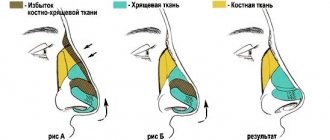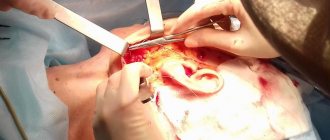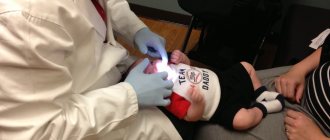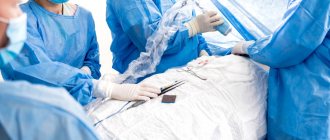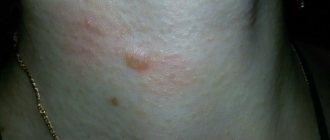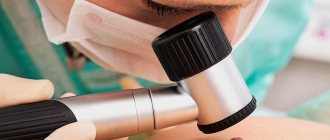In the previous article, we talked about rehabilitation after blepharoplasty. I mentioned that swelling and bruising are a normal reaction of the body to surgery. However, these postoperative manifestations still make patients nervous and worried.
There have been different cases in my practice. The majority overcame the swelling stage without problems. But there were also complications. Why do they arise? How to minimize the risk of complications? Let's figure it out.
Causes of bruising and swelling
During surgery, the blood vessels around the eyes are damaged. This leads to the formation of bruises - blood accumulations. The body sends more plasma to the site of injury. This process creates swelling.
Bruises after blepharoplasty go away in about 7-10 days. The swelling begins to decrease approximately from the third day after surgery.
Immediately after surgery, the bruise has a pronounced red color. Then the redness darkens, turning dark purple. Then the disturbed area begins to turn yellow. The last stage can last up to 8 weeks. This is due to the individual characteristics of the patient.
Help from folk remedies
To quickly remove bruises after lower eyelid blepharoplasty, you can use folk remedies. We invite you to familiarize yourself with the most effective and affordable methods of traditional medicine.
Based on calendula
At the pharmacy they buy the usual calendula tincture from golden mustache. The products are mixed, a bandage is dipped in the resulting mixture and applied to the bruises.
Comprehensive fee
Take 20 g of coltsfoot leaves, chamomile flowers and celandine leaves. The herbs are poured with boiled water (0.5 tbsp of herbal mixture per 100 ml). The product is left for two to three hours. Then take a piece of cotton or linen cloth, dip it in the prepared infusion and apply it to the bruises. It is recommended to keep the compress for as long as possible; the procedure must be repeated every 2-3 hours.
With aloe
Aloe is often used to eliminate bruises, since it has a resolving and wound-healing effect on problem areas. Juice is squeezed out of agave leaves (for this you can use a meat grinder or blender). Then a bandage with healing juice is placed on the bruise site. You can also simply cut an aloe leaf lengthwise and apply it to the epithelium with the inside.
Using bodyagi
Bodyaga is the most common folk remedy that helps quickly eliminate bruises. The substance has an irritating effect, which activates the blood circulation process and promotes the resorption of edema. Bodyaga is sold in the form of an ointment or powder; the powder is dissolved in water (2:1) and mixed. The prepared gruel is applied to the area of bruises and left for 45-55 minutes. After the specified time has passed, the pulp is washed off with water. To achieve quick results, procedures must be performed at least three times a day.
Honey-beet mixture
Suitable only for those patients who do not have allergic reactions to bee products. The beets are finely grated, then mixed with natural honey (proportion – 1:1). The prepared compress is applied to the bruise and left for 120 minutes. The procedure is recommended to be carried out only once a day.
Application of radish and horseradish
These two products are grated, mixed in equal proportions, applied to a bandage and placed on the area of the hematoma. This procedure helps eliminate bruises in 2 days.
Features of bruises after blepharoplasty
Bruises are most pronounced in the first two days after surgery. Moreover, these days it seems to the patient that his appearance is deteriorating. No worries. This is a normal part of the development of bruising and swelling. After 2-3 days they will begin to slowly fade away.
Bruises appear differently in all patients. Some people have practically none. Some people, on the contrary, have pronounced large purple spots. There are cases when bruises are localized only on one side of the face.
What determines the number of bruises?
- Patient's age.
The older we are, the harder it is for our body to recover.
- Skin type.
On thin skin with small capillaries, swelling and bruising appear more clearly.
- Scope of intervention.
- Type and technique of blepharoplasty.
An upper eyelid lift is associated with less bruising.
- Infection.
This situation rarely happens. But it's still worth mentioning.
- Individual characteristics of the body.
As I have repeated many times: bruising after blepharoplasty is normal. To reduce the level of their manifestations, a cooling bandage is applied after surgery.
It will take approximately six months to eliminate all traces of the procedure. This is how much time your body needs to get rid of the effects of surgery. Therefore, it is recommended to judge the results of blepharoplasty exactly after six months.
What else can help?
From the fourth day, an antiseptic cream is usually prescribed. Experts advise using the drug "Traumel", which effectively fights against severe swelling after blepharoplasty. When the wounds have healed, a finger massage is performed with gentle tapping. At the same time, such drugs as “Contractubex” and “Hydrocortisone” are recommended, eliminating postoperative scars and scars. A faithful assistant is microcurrent therapy. It will stimulate lymphatic drainage, reduce localized inflammation, and improve bioenergetics/cellular metabolism. Swelling is also reduced by mesotherapy and lymphatic drainage massage.
Attention! Each treatment option should be discussed in consultation with your doctor. Indeed, in certain cases the use of the drug is necessary, but in others it is undesirable. To avoid complications, it is better not to self-medicate. If bruising/swelling persists after blepharoplasty for 10 days, immediately visit a plastic specialist. He will tell you what to do with eyelid swelling after blepharoplasty if it does not go away. Dysfunction of the lymphatic system is possible, requiring therapy against possible complications.
The doctor will explain what to do with swelling after blepharoplasty and will prescribe herbal remedies (Arnica, Bromelain, etc.). They are taken both after and before surgery, primarily to reduce postoperative bruises. In some studies, the effectiveness of such drugs is fully confirmed, in others, no noticeable improvements are noted. The anti-inflammatory substance here is helenalin and pineapple juice. Spinach, cabbage and other foods containing vitamin K increase blood viscosity and reduce blood leakage. Vitamins A, C, zinc, beta-carotene and copper also contribute to regeneration.
Transconjunctival blepharoplasty is a fairly simple operation. However, at first the picture is the opposite of the goal. At this stage, behind the bandages and bruises, the expected result is not yet visible. But you now know how to remove (reduce) swelling after blepharoplasty, speed up healing and thereby help your own appearance return to normal.
Features of edema after blepharoplasty
The severity of edema depends on the individual characteristics of the patient’s body and age.
The size of the edema is influenced by the type of blepharoplasty and the method of intervention.
After upper eyelid blepharoplasty, swelling is less noticeable. But they take longer.
After lower blepharoplasty, they are much larger (reach the cheekbone). But they go faster.
The norm is also asymmetry of edema. In one eye, swelling may be more pronounced and last longer than in the other. This is not a pathology. A similar situation arises due to the asymmetry of the capillaries.
Sometimes the cause of asymmetrical edema may be a different volume of removed material.
Rehabilitation after liposculpture
Body liposculpture allows you to instantly get rid of “fat traps”, recreate an athletic profile and compensate for the lack of soft tissue volume (enlarge your breasts, buttocks). Liposculpture includes liposuction and lipofilling and is a minimally invasive operation (without incisions), since the surgeon performs all manipulations with a special cannula through small punctures in the skin. Our clinic has installed the latest vibration liposuction device PAL Liposculptor
, which makes such a serious and complex operation as gentle as possible - it eliminates damage to blood vessels, extensive hematomas, and bumps on the skin.
However, rehabilitation after liposculpture of the body cannot be called simple, especially if the plastic surgeon worked on more than 2 zones. After the operation, it is important to wear compression garments
, temporarily give up sports training (later it is not only possible to return to it, but it is highly desirable - to consolidate the result) and follow other doctor’s recommendations.
Useful tips
- For the first week, sleep on a high pillow. This promotes blood flow to the eye area.
- Apply cold compresses.
- Limit contact with the computer, TV, books.
- Wear sunglasses. They will protect you from ultraviolet radiation, dust and wind.
- Limit physical activity.
- Do not visit baths, saunas and swimming pools.
- Avoid drinking alcohol, strong coffee and green tea.
- Do not use medications or creams without the approval of your plastic surgeon.
All of the above recommendations are discussed with the patient after surgery. In fact, the list is much longer. I have given here only the main ones. The specialist prescribes the rest in accordance with the individual characteristics of the patient.
Let me remind you that you can find out a detailed list of recommendations for the rehabilitation period before the operation. During your consultation, your doctor will tell you what you need to do.
What are the types of swelling?
The appearance of swelling and bruising after eyelid surgery is inevitable. Their severity and degree of manifestation depend both on the anatomical characteristics of the patient and on the skill of the plastic surgeon and the method of performing the operation. In elderly patients, as well as those with cardiovascular diseases and diseases of the urinary system, the eyelids may swell more, swelling and hematomas last a long time.
- Swelling of the upper eyelid is rare and appears less pronounced compared to the lower eyelid. However, the time it takes for swelling to disappear after surgery is longer. This is due to a less active blood supply to the upper eyelid.
- On the lower eyelids it is usually more pronounced, which is due to the structure of the vascular network. Lasts for a week after surgery. Swelling of the lower eyelid tends to spread, right up to the zygomatic bone.
Swelling is at its maximum by the end of 2 days after plastic surgery. From 3-4 days they begin to decrease, the bruises change color. By 14-21 days, swelling is usually almost invisible; there may be residual swelling and slight asymmetry of the eyelids. By the end of the second month after surgery, complete healing occurs.
How long swelling will be present in patients depends on the following factors:
- Type of surgical intervention. The larger the volume of the operation, the more pronounced the swelling and the longer the recovery time. With a minimally invasive technique, there is less trauma to the skin and blood vessels, so swelling is less noticeable.
- Skin type. If the patient has thin skin, healing occurs faster due to the abundant blood supply to the eyelid. However, bruises in such patients appear brighter and remain noticeable longer.
- Age. In younger patients, regeneration occurs faster.
- Expressiveness of subcutaneous fat tissue. The swelling lasts longer in well-defined fatty tissue.
Is it possible to reduce swelling on your own?
To quickly remove swelling during the rehabilitation period, it is important not only to follow the doctor’s recommendations after surgery. It is also necessary to prepare properly. If you have concomitant diseases, consult your doctor, warn him about the upcoming procedure and listen to the recommendations. Adjust your diet, drinking regimen, and salt intake.
When the operation is over, strictly follow all medications prescribed by the surgeon.
In the first week after the intervention, try to sleep on your back. The head should be placed on a high pillow, try not to lean down. Sports should be completely excluded. Thermal procedures and hot baths are prohibited. Try to spend less time watching TV or working with gadgets.
Apply dry cold to the skin of your eyelids several times a day. On the 2-3rd day you are allowed to wash your hair, but avoid getting water in your eyes.
In the future, to reduce swelling, you can perform special exercises aimed at improving the tone of the muscles around the eyes (frequent blinking, moving the eyes to the sides as far as possible, opening and closing the eyes wide). Exercises should not cause discomfort.
In the first week after surgery, only medicinal ointments prescribed by the doctor are applied to the skin of the eyelids. In the future, with normal healing and the absence of contraindications, additional cosmetic products can be used.
Sunglasses should be worn outdoors to reduce the irritation of the sun's rays.
If sutures were placed during plastic surgery, the surgeon will remove them 3-5 days after the operation.
What to do - advice from professionals.
When you decide to have blepharoplasty, be careful when choosing a clinic and a doctor to whom you will entrust your health and beauty. Make sure your overall vision for the outcome of the operation is the same. Don't be afraid to ask all your questions.
Experienced surgeons say: in order to achieve maximum results, the patient must undergo thorough preoperative preparation, strictly follow all recommendations after the operation, keep the doctor informed if anything bothers you or unpleasant symptoms appear, and do not ignore postoperative examinations.
Remember: it is always easier for a doctor to adjust treatment in time than to treat complications!
If you want to consult on blepharoplasty in our clinic, write to Dr. Andrey Mikhailovich Prikhodko on his personal WhatsApp +7-914-791-39-74. You can view the results of the operations performed on the website in the Portfolio section, as well as on Instagram @doctor_prikhodko.
Indications for lower blepharoplasty
Surgery can significantly change the appearance and rejuvenate the face. Indications:
- hernial formations filled with fatty contents, which form bags under the eyes;
- wrinkles and sagging of the lower eyelid due to excess skin and loss of elasticity;
- the appearance of a tear trough due to the retraction of the lower eyelid, which is typical for older people;
- ptosis of the tissues of the lower eyelid;
- defects of the lower eyelid resulting from injuries or previous diseases.
Blepharoplasty results
The effects of lower eyelid blepharoplasty are achieved using various surgical techniques, but all of them can eliminate the problem with which the patient consulted a doctor. After a lower eyelid lift, patients achieve the following results:
- bags under the eyes disappear as all excess skin is removed;
- wrinkles are removed, the periorbital area is smoothed;
- externally, the aesthetics of the face significantly improves, it looks fresher.
When planning to undergo canthopexy of the lower eyelid, patients expect exactly these effects. To avoid being disappointed with the results, choose trusted clinics. “Miracle Doctor” in Moscow is guaranteed to perform the procedure at the highest level and solve all the patient’s cosmetic problems. The price is available in the price list on the clinic’s website.
Contraindications
Contraindications relate both to local restrictions and to the general condition of the body, in which surgical intervention is not recommended at the moment or at all. Limitations of lower eyelid plastic surgery include:
- sudden jumps in blood pressure;
- diabetes mellitus, in which tissue healing is difficult;
- oncological diseases;
- pregnancy and lactation, menstruation;
- low blood clotting, hemophilia;
- liver and kidney diseases;
- inflammation of the tear ducts;
- retinal detachment;
- conjunctivitis;
- infectious diseases.
Preparation
Blepharoplasty is a full-fledged surgical intervention in which the patient is required to undergo a series of examinations. Before the operation, the doctor will prescribe a series of tests for the patient, the results of which will reveal contraindications:
- electrocardiogram;
- fluorography;
- blood test - general, for human immunodeficiency virus, hepatitis and syphilis, coagulability and Rh factor;
- Analysis of urine;
- ophthalmological examination - analysis of visual acuity, eyelid tone.
If necessary, additional research may be ordered. Taking into account the results, the most appropriate method of intervention is selected to achieve the desired effect. Before the operation, the patient must abstain from alcohol two weeks before the procedure, take certain medications (primarily blood thinners), eliminate allergens from the diet, and the day before the operation, avoid hard-to-digest foods.
Prevention of cataracts
The existing risks of developing cataracts due to genetic predisposition or due to old age cannot be eliminated. If this is the case, you should limit yourself to regular preventive examinations so as not to miss the onset of the disease and, at the first signs, begin to use special eye drops that slow down the process of clouding of the lens.
"Oftan-Katakhrom" is a drug created exclusively to slow the development of cataracts of various origins. Improves energy metabolism in the lens of the eye (contains vitamin and antioxidant nicotinamide, antioxidant cytochrome C and energy source adenosine). Suitable for people diagnosed with cataracts who are not ready for surgery. All substances of the drug perfectly complement each other, preventing the development of cataracts. Produced in Finland, included in the standards of medical care of the Ministry of Health of the Russian Federation.
Patients with diabetes should remember the greater risk of developing cataracts, monitor carbohydrate metabolism and undergo regular examinations by an ophthalmologist.
Other known mechanisms for the development of cataracts - traumatic, chemical, radiation - are those factors that are dangerous not only for the eyes, but also for the entire body as a whole. Any normal person, by default, tries to avoid such influences.
For early diagnosis of cataracts and other eye diseases in adulthood, it is recommended to undergo a preventive examination by an ophthalmologist at least once a year.
When can injections be given?
PRP therapy (plasmolifting)
Skin restoration after plastic surgery on the face is facilitated by PRP therapy (plasmolifting)
.
Swiss plasma lifting RegenLab
is today considered the “gold standard” and one of the world leaders in injection cosmetology. Facelift (surgical facelift) eliminates deep wrinkles and ptosis of the face, but in itself it does not affect the quality of the skin. PRP therapy (plasmolifting) saturates the skin with platelets, triggering at the cellular level the processes necessary for rejuvenation from the inside (stimulates the synthesis of its own collagen, elastin, hyaluronic acid).
Do plasma lifting
it is possible already
3-4 weeks
after plastic surgery, sometimes earlier - it depends on the specifics of the surgical intervention, the recommendations of the plastic surgeon and cosmetologist.
PRP therapy
works well with facial lipofilling
, as platelet-rich plasma improves cell survival.

